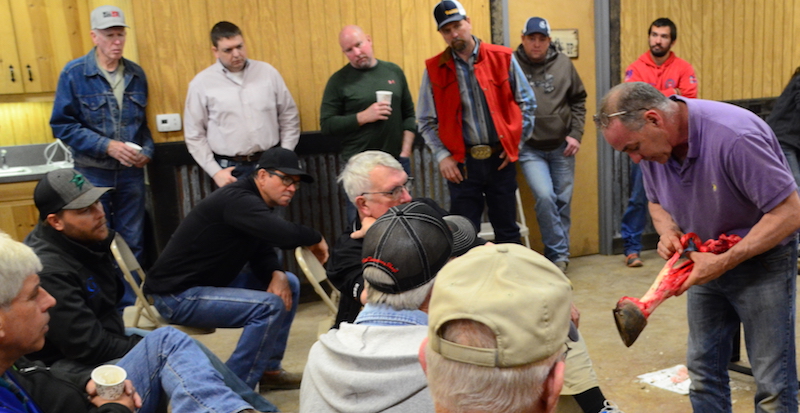Farriers gathered on March 12 for a clinic held in conjunction with a barrel event at the Diamond T Arena in Denton, Texas. The day was sponsored by Razerhorse and featured Mitch Taylor and Ian McKinlay as clinicians.
Mitch Taylor of the Kentucky Horseshoeing School in Richmond, Ky., performed dissections of three fore limbs, stressing that farriers understand anatomy and the function of the foot. His thorough review examined the internal structures and shed light on why certain injuries occur.

Ian McKinlay learned horseshoeing from his father and was first paid for shoeing a horse back in the early 1970s. First shoeing Standardbreds, then track Thoroughbreds, McKinley earned a reputation as someone who could help get a horse (especially one with a quarter crack) back in competition. In the heyday of the Meadowlands, he would see about 20 crack cases each day. Today, his practice is devoted to tackling emergency cases and then turning the horse back to the primary farriers.
Throughout the clinic, McKinlay stressed that many of the horses from the cases he showed would have improved or further complications avoided through rest and proper husbandry. However, time off isn’t a luxury for farriers who work with horses in competition. From his work with track horses, McKinlay says the pressures can be immense on the farrier. In certain circumstances, you may be able to get 2-3 weeks rest for a horse, but the trainers and owners want the horse back in competition immediately. This impatience can be detrimental for the farrier.
“And if you are unable to show results, they will find someone else,” he says.

McKinlay demonstrated how he direct glues on shoes and presented various cases to show how he laces and patches quarter cracks. When glueing on shoes, says foot preparation is key. He will trim the foot with his nippers and hoof knife, and then use a Dremel to further prepare the foot for glueing. He brushes the foot off and wipes it dry. He doesn’t want to clean the foot with acetone, because he feels any of the remaining liquid may inhibit the bond with the glue he uses.
PHOTO GALLERY:
Razerhorse Clinic featuring Mitch Taylor and Ian McKinlay
He prefers to apply the glue and shoe served on a single sheet of plastic wrap. He’ll keep the foot elevated until the glue cures and remove any excess glue. Removing the plastic within the web allows him to address any glue that has migrated onto the sole.
When he patches a crack and needs a drain, McKinlay uses a small Teflon tube to create a canal for applying treatment to the area. The Teflon won’t stick to the material he creates the patch with, making for easy removal.
You can read more about McKinlay's approach to crack repair in the May/June issue of American Farriers Journal.








Post a comment
Report Abusive Comment